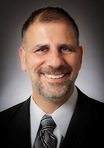Sam Gennawey's Blog, page 11
March 4, 2013
Disneyland: What Year Would You Go Back?
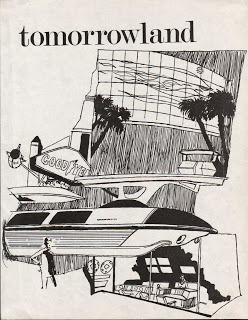 So what was the most magical year at Disneyland? If you could go back and visit, which year would you choose? Would it be 1959 with a bunch of new attractions? Or 1963? Some would argue that the mid-1980s were the golden age. Maybe even today is the climax. Good game to play with others, eh?
So what was the most magical year at Disneyland? If you could go back and visit, which year would you choose? Would it be 1959 with a bunch of new attractions? Or 1963? Some would argue that the mid-1980s were the golden age. Maybe even today is the climax. Good game to play with others, eh?A good candidate might be 1967. New Orleans Square and it’s a small world were still new. And the Park would open two major projects that Walt Disney was deeply involved with. Pirates of the Caribbean would set a new standard of showmanship. Tomorrowland would be reinvented and become A World on the Move. There is much to be said about Pirates but this time I am going to focus on Tomorrowland.
The dedication for Tomorrowland summed up Walt’s feelings. It said, “Science and technology have already given us the tools we need to build the world of the future. If we use the right now, we won’t have to wait to know what tomorrow will bring. I believe we will prove with new Tomorrowland that today IS the future.
New Tomorrowland ’67 covered five acres or the equivalent to more than four football fields. Cost of the project was approximately $20 million. The site plan was rather clever. The WED designers claim “a walk around the new Tomorrowland area -- from door to door of each attraction -- measures just one-half mile. This short walking distance is the result of careful positioning of the pavilions around a pivotal point (the PeopleMover station) without creating a “crowded” effect. Who thinks like this today?
That 85-foot tall central structure was known as the “theme” building with the Rocket Jets on top and the WEDway PeopleMover station on the second level. On the ground level was the Space Bar where guests could pick up a sandwich or a soft drink. The architecture for the entire area was described as “a study in pleasing textural contrasts” made of “uninterrupted surfaces [that] complement colorful, highly imaginative murals and sculptured panels of metallic veneer.”
The Rocket Jets were the adult version of Dumbo. Guests took one of two gantry elevators to the top level of the “theme” building. They board one of twelve jets and adjust the altitude with hydraulic pressure and compressed air for one and one-half minutes.
On the second level was the WEDway PeopleMover sponsored by Goodyear Tire and Rubber Company. The 58 constantly moving trains were boarded via a revolving turntable. The trains were pushed along by 500 motors embedded in the track. Guests could preview Tomorrowland and get a peek inside all of the shows and attractions. There was never a wait as the ride could handle a remarkable 4,800 guests per hour. There was even a V.I.P. Lounge located on the back side of the Plaza Inn.
The first of the new attractions was Adventure Thru Inner Space presented by Monsanto, the giant chemical company. There were 123 “Atomobiles" that would transport guests through the “Mighty Microscope” where they “appear to shrink beyond the size of a snowflake and journey into the universe of the atom.” Over the next six minutes they would encounter crystal like ice and enter “into the atom where the nucleus resembles a giant sun.” In August 1969, Cast Members were able to accommodate 35,583 guests in a 17 hour day. I am sure a celebration took place in the V.I.P. Guest lounge that was next to the loading area.
The Flight to the Moon presented by McDonnell Douglas was completely revamped. The attraction was divided into three experiences. Guests begin in Mission Control where they listen to Flight Control Director Dr. Tom Morrow, an Audio-Animatronics character, banter with a live Cast Member. This was a first. After the briefing, guests board one of the two 162-seat moon ships and feel the sensations of the pull of gravity and “weightlessness.” The journey through space would take twelve minutes.
The marquee attraction was the Carousel of Progress presented by General Electric. The show was one of the big hits at the 1964-1965 New York World’s Fair. At Disneyland, the show was installed in a 200-foot wide two-level circular structure with six 240-seat theaters mounted on a revolving platform. The platform revolved every 4 minutes. The building was decorated with a colorful, abstract mural.
A new version of America the Beautiful debuted in the Circle-Vision 360 theater. While guests waited, they were entertained by one of the “attractive Bell Telephone” hostesses. All of the hostesses (yes, all women) worked for the Bell Telephone System and work at Disneyland from four to six months then back to their old jobs. The 12 minute show was presented with a new system using 9 synchronized, 35mm motion picture projectors and stereophonic sound broadcast through 19 speakers. The post-show area allowed for guests to play with the advance telecommunication displays including a speaker phone!
The show takes guests “into the homes of four generations of the same family from the days before electricity to the present.” It featured 32 Audio-Animatronics “stars.” As the show came to an end, guests were invited to the second level to view the scale model of Progress City, “an entire community captured in capsulized realism.” The fully animated model was 6,900 square foot model and built at 1/8” to the foot. When the attraction opened, only women were allow to operate the show. There was also a V.I.P. Guest Lounge on the second level.
The Tomorrowland Terrace (called the Refreshment Gardens during development) presented by Coca-Cola was the place to be when it came time to eat or dance. WED designers created a “facility without exterior walls that would obstruct views of the always-moving panorama of Tomorrowland. Disneyland was rightly proud of the the infrared gas-fired conveyor-broiler that could prepare 1,500 hamburgers per hour. There was also a subterranean network of conveyors to take the bussing procedures out of sight. When it came time for the live entertainment, an modern oval planter rose from the ground level and it became a canopy for a stage. The canopy over the dining area would come alive with 450 tiny lights.
Also in 1967, the Disneyland-Alweg Monorail got four brand new Mark III trains. The five-car trains carried 127 guests on the 2.5 mile, 10-minute loop to the Disneyland Hotel and back. The Matterhorn was considered part of Tomorrowland, the Submarine Voyage was still taking guests under the North Pole, and the two Autopias were still running over the feet of Cast Members.
If you needed to buy some souvenirs you had three places to choose from. The Mod Hatter carried “way-out hats of every description.” The Character Shop, was the second largest store in the Park and carried a wide variety of merchandise. There was even a temporary souvenir stand located in Alpine Gardens.
In just twelve years, the Park had grown from 22 attractions to over 52. The initial investment of $17-million had grown to $95 million. More than $40 million was spent since 1964. The result is more than 60 million people had passed through the turnstiles since opening day.
Those guests have included 11 kings and queens, 26 presidents, prime ministers, and other heads of state as well as 36 royal princes and princesses. The U.S. State Department described the Park as “one of the nation’s greatest goodwill builders.” Visiting Disneyland was so popular with dignitaries, it was the second most requested destination after Washington D.C.
Not only has Disneyland prospered but Anaheim had also done okay. A new 9,100 seat Anaheim Convention Center opened with more than 200,000 square feet of display space. Anaheim Stadium, home of the California Angels recently opened. Grow in the hotel inventory was unprecedented. In 1955, there were 60 motel-hotel rooms in the Anaheim area. By 1967, there were 125 hotels and motels with more than 6,500 rooms within a five mile radius of the Park. The Disneyland Hotel had expanded to 610 guests rooms and a new 250-seat coffee shop had opened. There was a 9-hole golf course, a driving range, a miniature golf course, and an Olympic-size swimming pool.
Many of the traditions we know today were in place by 1967 including the annual Christmas parade, a giant New Year’s Eve Party, Grad Nights, and Summertime dance parties.
What is your favorite year?

Published on March 04, 2013 11:00
February 28, 2013
Disney Parks: The Elements of Setting
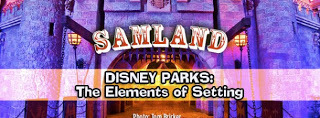
The Disney parks are at their best is when they become the stage where you can live out your cinematic fantasies. Family friendly of course. Disneyland is one of the first examples of virtual reality. In fact, Imagineer Tony Baxter suggested, “Disneyland defined the term ‘virtual reality.’ Today, the term is associated with a video game or a cyber environment, but for me, the Jungle Cruise is virtual reality! It’s as authentic a jungle as you can possibly have in the desert in Southern California—that’s the virtual reality of it.”
READ MORE AT MICECHAT
Published on February 28, 2013 07:48
February 26, 2013
MAIN STREET - FORM FOLLOWS FUNCTION
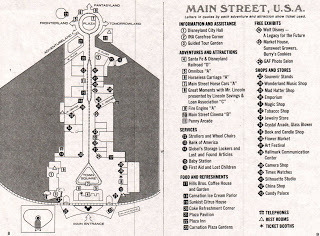
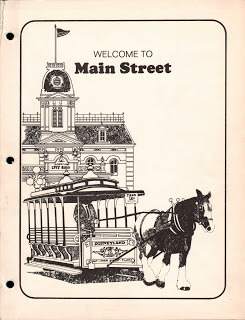
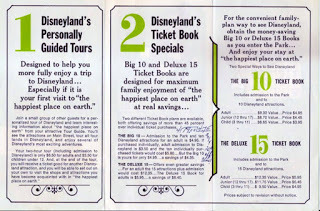
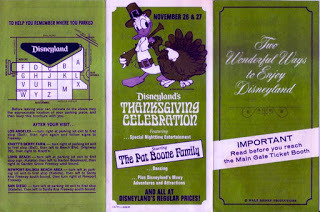 Looking through my files the other day, I came across an early 1970s Cast Member training manual for Disneyland’s Main Street U.S.A. In this case, Main Street was describe as the area that included the parking lot, the Main Gate Ticket Sellers, the Ticket Takers, Guest Relations, Main Street vehicles, the shops, and other related activities. Since most of these Cast Members would be the source of “initial” contact with the guests, making a good first impression is their primary responsibility.
Looking through my files the other day, I came across an early 1970s Cast Member training manual for Disneyland’s Main Street U.S.A. In this case, Main Street was describe as the area that included the parking lot, the Main Gate Ticket Sellers, the Ticket Takers, Guest Relations, Main Street vehicles, the shops, and other related activities. Since most of these Cast Members would be the source of “initial” contact with the guests, making a good first impression is their primary responsibility. This attitude started at the parking lot. There were two entrances. The one at Harbor Boulevard had six entry lanes and the Katella Boulevard entrance had five. There were 11,500 parking spaces inside the 110-acre lot and it costs 50 cents to park. On an extremely busy day, more than 18,000 cars would make their way in and out of the lot. When you were ready to leave, there were three exits including one on West Street.
The ticket sellers would be the next contact. To enjoy the attractions, guests needed to purchase tickets. Three-fourths of the guests would buy a Ticket Book. From the Park's operational standpoint there were a number of reasons why this was good for Disney. The Ticket Book was easy to market because it provided the guest a good value. Tickets helped to distribute the guests throughout the park and better utilities the Park's capacity.
The real pressure was on the Ticket-Takers who made sure “that each guest be greeted warmly and as much as reasonably possible, be placed in a congenial frame of mind.” Whether the guest was entering one of the 16 entrance turnstiles or leaving through one of the nineteen exit turnstiles the host or hostess must send every guests, “either in or out, with a warm, friendly feeling and a desire to return.”
Cast Member learn that the Main Street vehicles were an integral part of the show. Their first function is to help set the mood by taking guests back to “Main Street U.S.A., circa 1900” where they notice the “contrast to the hustle and bustle of our modern world and its streamlined modes of transportation is sharp and penetrating.” Secondly, they served as a real transportation alternative, especially at the end of a long day. Finally, they provide an opportunity for Cast Members to interact with the guests, answering questions and giving tips. They called these operators as the “first impression--last impression” group.
Just like today, there were four ways to make your way up and down Main Street; the Horse-Drawn Street Cars, the Horseless Carriage, the Omnibus, or the Fire Engine.
The four Horse-Drawn Street Cars were composites of 19th Century street cars based on photographs of earlier vehicles. They were built at the Disney Studio Coach Shop. The horses that pull the Street Cars were called “our necessary secondary motor.” The horses are Percheron, Belgian, Clydesdale or a cross between Shire and Percheron. During training, the horses are subjected to conditions similar to what they may encounter in the Park. For a minimum of thirty hours, four hours a day, the horses are marched around a circular ring while loudspeakers blast music, horns, and the shouts of crowds. Once they pass, a handmade custom harness is crafted and they work a four-hour day, five-days a week. At the beginning and end of their shift they are given “taxi service” back to the Pony Ranch behind the Park where they clock in and out.
The Horseless Carriages were known as “1903’s” although “you could pick any year -- 1904, ’05, or ’06, and be just as accurate.” The two-cylinder engines “have the horsepower, the sound -- and even a slight case of the shakes -- as did the originals.” Many guests prefer one of the two Omnibuses. Described as “close to authentic reproductions of Fifth Avenue buses” from turn-of-the-century New York.” The Park was proud to boast that the motors “have been converted to natural gas consumption and takes advantage of modern improvement which provide for better operation and no smog.”
There was also a motorized Fire Engine. The design was a composite of hose-carrying fire trucks of the turn-of-the-last-century with the guests taking the place of the hoses. Underneath the sheet metal was a modern (1950s) truck with a Jeep rear axle, a three-speed truck transmission, a pick-up truck engine, and standard drive-line parts. At least the bell is authentic “after considerable searching.”
A walk along Main Street in the early 1970s would feel both familiar and a bit strange. Let's start with what is still here today. Of course, the Disneyland Emporium is in the same spot since opening day. The same for the Fire Department and Walt Disney’s Apartment. The two merchandise stands right at the tunnels, and the restrooms are still right where they have been. The Magic Shop, the Candy Palace, the Plaza Inn, and the Coca-Cola Refreshment Corner, are still where they have been for many years. The only change to the Mad Hatter Shop and the Silhouette Studio was they are no longer managed by lessees.
Some shows and shops have seen significant changes over the past 40 years. Once upon a time the Main Street Cinema showed a variety of silent films instead of Mickey Mouse. After all, Mickey Mouse was not a silent film artist. He didn’t fit in the time frame of Main Street. Great Moments with Mr. Lincoln is in the Opera House with a show similar today to the one back then. Most of the merchandise has changed at the Market House. Fortunately, the pot-bellied stove, the party line phones, the Cider and dill pickles are still there. With the pin-ball machines removed, the Penny Arcade is no longer what it used to be.
There are many shops that have gone off to Yesterland. The Bank of America used to be the only bank in the United States that was open on Saturdays, Sundays, and Holidays. Now it is the Disney Gallery. There was the Wonderland Music Store was where you could find music boxes, player-piano rolls, and a complete selection of Disneyland and Buena Vista records.
Facing Town Square, in a space that is no longer used for anything was the Hills Brothers Coffee House & Restaurant. Nearby was a tribute to Walt Disney with a display for Cal Arts, a six-minute film about the school, and the 208 awards that Walt had received over his lifetime. Also facing Town Square was the Global Van Lines Parcel Storage Center. That space became part of the Emporium many years later. The Carefree Corner is also gone. Here, guests could sign the Official Guest Registration book. The Hallmark Communication Center was managed by Hallmark because they featured a complete display of greeting cards and the displays changed frequently.
Other shops missing today include the Tobacconist, where you could pick up a rare pipe or a special blend of tobacco, the Jewelry Store, the GAF Camera Center, and the Pharmacy. On one branch of Center Street was the outdoor Disneyland Art Festival. On the other branch was the Disneyland Flower Market where guests could purchase “many flower varieties, hand made for life-like appearance.” No longer could you get fresh squeezed orange juice from the Sunkist Citrus House or take a walk through Alpine Gardens or eat on the patio of the Plaza Pavilion restaurant-cafeteria or dance...sigh...at the Carnation Plaza Gardens.
Amazing what can happen in 40 years.
Published on February 26, 2013 09:00
February 25, 2013
WDW DEATH MARCH
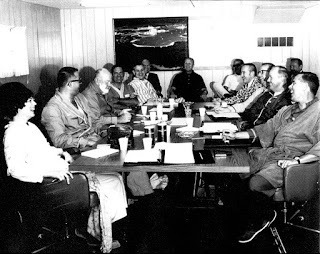 This is a story that came from John Curry who was Walt’s first employee for Walt Disney World. Curry was the director for the Hotel Division and was in charge of putting together all of the processes and procedures. If the name sounds familiar that is because it is the same Curry that managed the campground at Yosemite Valley.
This is a story that came from John Curry who was Walt’s first employee for Walt Disney World. Curry was the director for the Hotel Division and was in charge of putting together all of the processes and procedures. If the name sounds familiar that is because it is the same Curry that managed the campground at Yosemite Valley. According to Curry, while Walt Disney World was under construction, there was a small group of executives known as the Disney World Operating Committee (DWOC). The group was made up of division directors who reported directly to Dick Nunis, who was the vice president of Theme Parks.
With the deadline of October 1, 1971 looming on the near horizon, Nunis would gather the team for a weekly “death march" to review what was happening. Curry said, “This March got earlier and earlier each week until it was scheduled for 6:00 a.m.” The group decided to get back at Nunis and “in a humorous revolt the members of DWOC got together and planned to come to the next March in pajamas.” They brought photographer along. Curry was quick to point out, “While fun, it had no impact on the schedule.”
In the photo, moving clockwise from bottom left is:Lorraine Wright, Administrative Assistant To DWOCJim Pascilla, Human ResourcesJack Olsen, MerchandiseJohn Curry, HotelsCarl Bongirno, Finance Phil Smith, LegalDick Nunis, VP, Theme ParksCard Walker, EVP, DisneyJack Lindquist, MarketingBob Mathewson, Theme ParkTed Crowell, Facilities & MaintenanceBob Allen, Support Services
Published on February 25, 2013 10:55
February 21, 2013
WHAT IS YOUR FAVORITE YEAR?
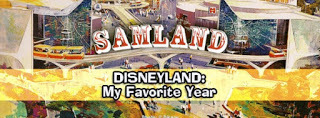
So what was the most magical year at Disneyland? If you could go back and visit, which year would you choose? Would it be 1959 with a bunch of new attractions? Or 1963? Some would argue that the mid-1980s were the golden age. Maybe even today is the climax. Good game to play with others, eh?A good candidate might be 1967. New Orleans Square and it’s a small world were still new. And the Park would open two major projects that Walt Disney was deeply involved with. Pirates of the Caribbean would set a new standard of showmanship. Tomorrowland would be reinvented and become A World on the Move. There is much to be said about Pirates but this time I am going to focus on Tomorrowland.The dedication for Tomorrowland summed up Walt’s feelings. It said, “Science and technology have already given us the tools we need to build the world of the future. If we use the right now, we won’t have to wait to know what tomorrow will bring. I believe we will prove with new Tomorrowland that today IS the future.
READ MORE AT MICECHAT
Published on February 21, 2013 07:54
February 20, 2013
ECHOES
As you spend time in the Disney parks, you will run across echoes within the built environment. In good urban design, there is a quality called Echoes where similarities should repeat throughout a design. This strengthens the special qualities of the space.
The popcorn cart in New Orleans Square and the work of one painter who lives above the French Market.
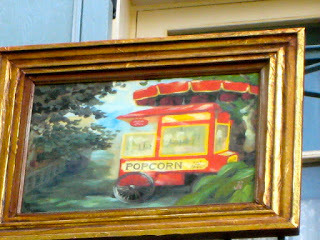
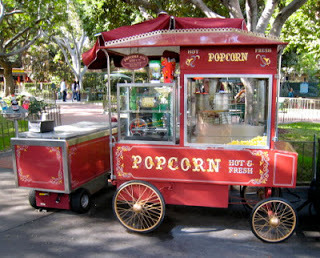
The original Frontierland train depot and the one at Toontown.
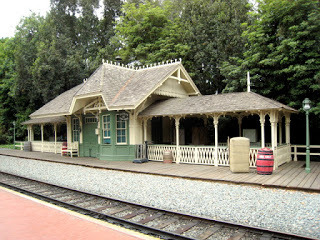
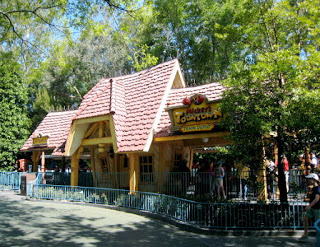
The Petrified Tree in Frontierland is echoed by the Hoodoo of Big Thunder Mountain Railroad.
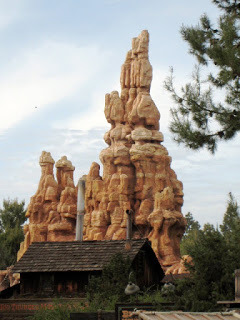
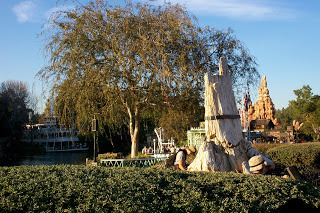
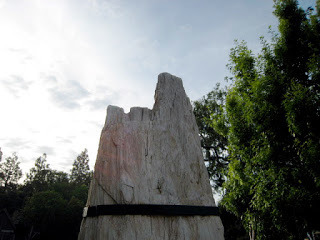
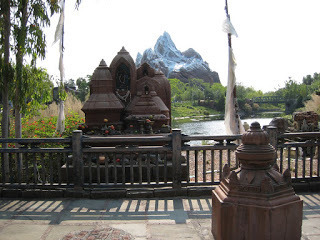
The temple at the bend of Asia and Expedition Everest in Disney’s Animal Kingdom.
Published on February 20, 2013 09:00
February 18, 2013
WDW 1969: How to Build Resort Hotels
The 1,450 steel framed unitized rooms for both hotels would be built off-site as modular structures then slipped into the framework on site. The goal was to reduce the weight of each room thereby, reducing the amount of steel necessary to build the structures. A typical room weighed 30-tons while this new process would cut that weight to only 6 tons. The project was meant to be a demonstration of new technologies in keeping with the original spirit of the E.P.C.O.T. project. Each unit was so strong, three could be stacked on top of one another without any additional support. Welton Becket & Associates was hired as architect. There were other hotels also mentioned in early press releases including the Asian, Venetian, and Persin motifs.

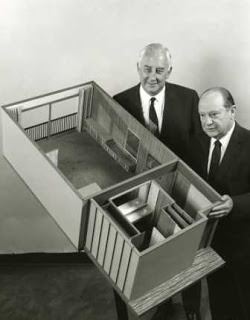
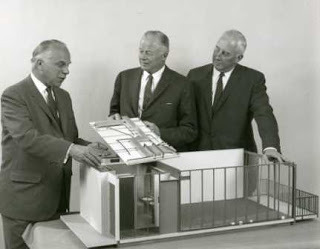



Published on February 18, 2013 10:00
February 15, 2013
WDW Press Release 1971
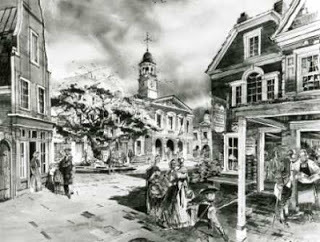 Also new to this park would be Liberty Square. The land would “recreate America’s past at the time of our nation’s founding. Here, shops and stores will portray the way of life in colonial days, and housed in a replica of Philadelphia’s Independence Hall will be One Nation Under God, an inspiring dramatization about the American Constitution and the 37 Presidents who have led our nation.”
Also new to this park would be Liberty Square. The land would “recreate America’s past at the time of our nation’s founding. Here, shops and stores will portray the way of life in colonial days, and housed in a replica of Philadelphia’s Independence Hall will be One Nation Under God, an inspiring dramatization about the American Constitution and the 37 Presidents who have led our nation.” 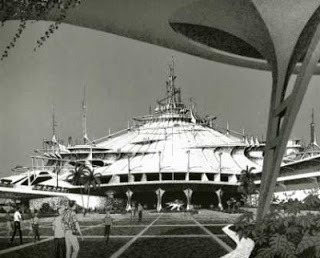
Another attraction sure to draw tourists would be Space Mountain. “At 20-stories tall, this structure in Tomorrowland will house a number of adventures and attractions themed to the world of the future.” There would be 4 “high speed ‘rocket sled’ tracks” that would “climb the outside of the mountain, then plunge inside for a dark ride, simulating a trip though outer space.”
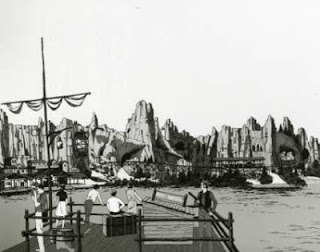
One of the most impressive new attractions at the Magic Kingdom would be Thunder Mesa. Set in Frontierland, the show building would have been massive and “designed to resemble a ‘table-top mountain,’ typical of those on southwestern deserts.” There would be “a pueblo-style village and other attractions, including the Western River Expedition, a frontier fantasy on the grand scale of Pirates of the Caribbean” in California’s Disneyland.
Published on February 15, 2013 10:30
February 14, 2013
THE VACATION KINGDOM OF THE WORLD
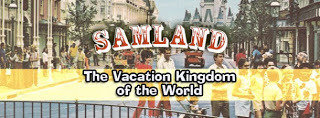
A major milestone in the history of Walt Disney Productions (WDP) occured on April 30, 1969, when the company announced details for “The Vacation Kingdom of the World” in Central Florida. The announcement came from Messer. Roy O. Disney, Donn Tatum and Card Walker of Disney, Florida Governor Claude R. Kirk, Jr., and the top executives from United States Steel, RCA, the Monsanto Company, and Aerojet-General Corporation. The men stated that the resort would open in October, 1971.
 Roy O. Disney began with a story about a time back in 1953 when his brother Walt started the Disneyland project. He felt “the real strength of our Company has been that Walt and the staff he built always seemed to be able to reach out and touch the heart of the public.” He stressed, “The important thing in our Company has always been sticking to the basics, and upholding the high standards and quality of our product.”
Roy O. Disney began with a story about a time back in 1953 when his brother Walt started the Disneyland project. He felt “the real strength of our Company has been that Walt and the staff he built always seemed to be able to reach out and touch the heart of the public.” He stressed, “The important thing in our Company has always been sticking to the basics, and upholding the high standards and quality of our product.”READ MORE AT MICECHAT
Published on February 14, 2013 08:44
February 13, 2013
WDW Castle Press Release 1970
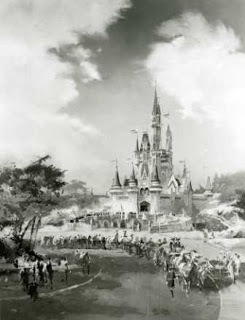
At the heart of the Magic Kingdom would be Cinderella Castle. The PR team stated it would “be the visual focal point for Walt Disney World’s theme park. Twice as high as the castle at California’s Disneyland, it may be seen by guests staying at the ‘Vacation Kingdom’s’ nearby resort hotels.” A sit down restaurant in the Castle’s interior with Medieval decor was also announced.
I am reminded when I look at this drawing that I have never seen the castle without some sort of stage out front in the courtyard. There was a certain majesty about the staircase and the creation of a proper platform for the castle that is missing now. The castle is one of the very few 360 degree buildings at the Magic Kingdom and it has a responsibility to reach toward the sky while showing that it is firmly placed on the ground. Wouldn't it be fun to see it as it was intended?
Another illustration courtesy of Disney and Arlen.
Published on February 13, 2013 09:00

